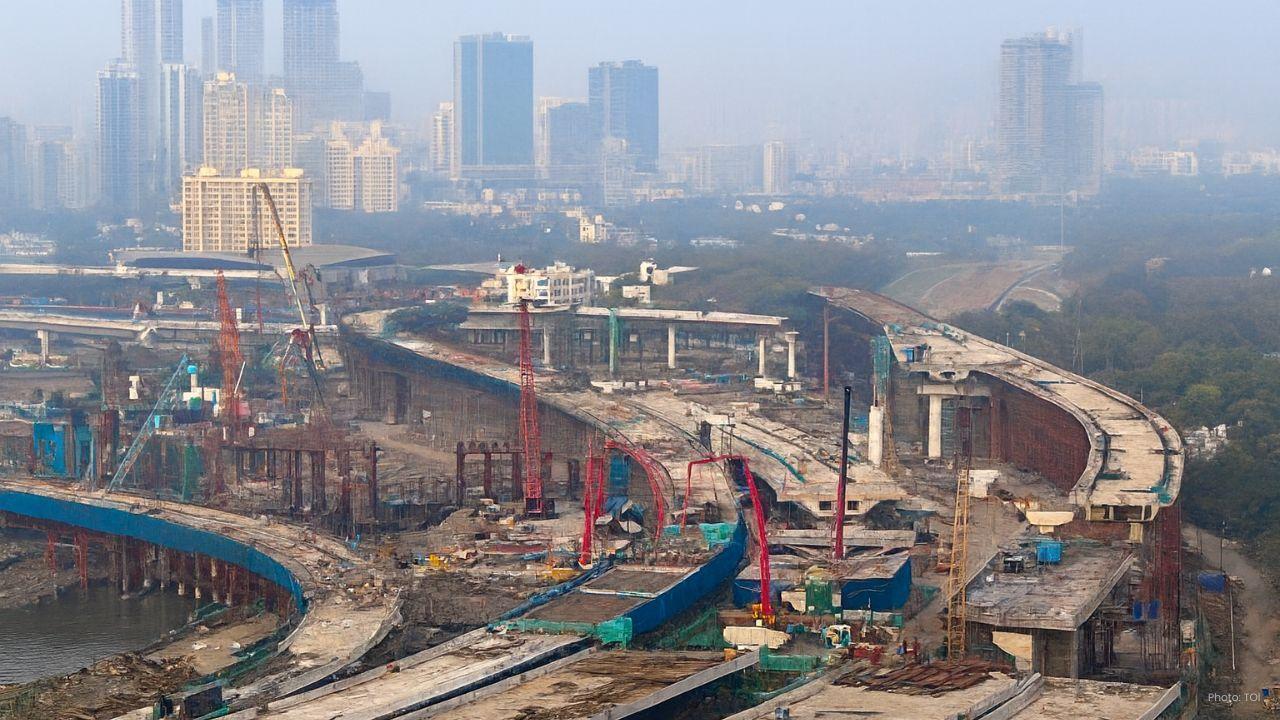
Post by : Shivani
Delhi’s Pink Line is on the verge of taking a landmark position in the Delhi Metro network. Once the Majlis Park–Maujpur extension opens later this month, the Pink Line will stretch to 71.6 kilometres and include 12 interchange stations, making it the longest corridor in the system.
This expansion is part of Phase IV of DMRC’s (Delhi Metro Rail Corporation’s) expansion plan, and will allow the Pink Line not only to serve a larger geographic area but also to function as a circular route.
At present, there are 29 interchange stations across the entire Delhi Metro network. The Pink Line, which currently has 10 interchange stations, will add Maujpur and Majlis Park as new interchanges when the upcoming stretch becomes operational.
Some of its existing interchange stations are Azadpur, Punjabi Bagh West, Netaji Subhas Place, Rajouri Garden, Lajpat Nagar, Dilli Haat‑INA, Mayur Vihar I, Anand Vihar ISBT, Karkardooma, and Welcome. With the new stretch, passengers will be able to switch lines even more flexibly.
The Pink Line was originally inaugurated in several segments. The first section—Majlis Park to Durgabai Deshmukh South Campus—opened in March 2018. Subsequently, other parts followed, including two disconnected segments (Majlis Park‑Mayur Vihar Pocket 1, and Shiv Vihar‑Trilokpuri) due to land acquisition issues in Trilokpuri. The final gap‑filling 0.85 km stretch (Trilokpuri‑Sanjay Lake to Mayur Vihar Pocket 1) was inaugurated in August 2021.
With the new Majlis Park–Maujpur segment, the Pink Line will become the first DMRC line to create a circular route, enhancing connectivity across Delhi significantly.
In comparison:
The Blue Line has 10 interchange stations.
The Yellow Line has 8 interchange stations.
The Red Line, which runs from Rithala to Shaheed Sthal, has 4 interchange stations.
The shortest line, the Grey Line (Dwarka to Dhansa Bus Stand, about 5.5 km), has just one interchange station.
Under Phase IV, DMRC plans to add even more interchange stations through new corridors and extensions. For instance:
The Golden Line (Tughlaqabad–Aerocity) will have 7 interchange stations.
The Magenta Line extension from Janakpuri West to RK Ashram will add 3 new interchanges.
Other extensions, such as Lajpat Nagar‑Saket G Block, Inderlok‑Indraprastha, and Rithala‑Narela‑Kundli are also in the works.
All of these will substantially grow the network, both in reach and in ease of travel for commuters.
For Delhi’s commuters, the Pink Line’s 12 interchange stations mean greater flexibility. Passengers will be able to move across different metro lines without needing to exit stations, reducing travel times and simplifying transfers. Interchange stations are especially useful for people whose journeys cross from one side of the city to another and need to switch lines. DMRC’s own analysis for October 2023‑March 2024 showed that a large share of metro users are transferring between lines rather than staying on a single line.
This expansion doesn’t just represent physical distance—it marks a shift in connectivity and metro network design. The Pink Line’s transformation into the longest and the first circular corridor is a step change in how metro transit integrates across Delhi. More areas will be linked, more commuters will benefit, and the transit network as a whole becomes more efficient.
For further updates on infrastructure, urban transport, and metro expansion maps, you can follow our platform at Armust News: visit Armust News for in‑depth coverage and analysis.
Delhi Metro, Pink Line extension, Majlis Park Maujpur, interchange stations, circular route, DMRC Phase IV










Bengaluru-Mumbai Superfast Train Approved After 30-Year Wait
Railways approves new superfast train connecting Bengaluru and Mumbai, ending a 30-year demand, easi

Canada Post Workers Strike Halts Nationwide Mail and Parcel Services
Canada Post halts operations as CUPW strike disrupts mail and parcel delivery nationwide amid disput

PM Modi Launches BSNL ‘Swadeshi’ 4G Network, 97,500 Towers Built
India enters global telecom league as PM Modi inaugurates BSNL’s indigenous 4G, connecting 26,700 vi

India’s Iconic MiG‑21 Takes Final Flight After Six Decades of Service
After 60 years India retires its MiG‑21 fighter jet, a legendary yet controversial warplane marking

Hindustan Zinc unveils AI hotspot monitoring at Debari smelter
Hindustan Zinc launches AI-powered Switchyard Hotspot Monitoring at Debari smelter to cut outages bo

Chinese experts worked inside sanctioned Russian drone plant
Chinese drone specialists visited IEMZ Kupol supplying parts and drones via intermediaries, deepenin